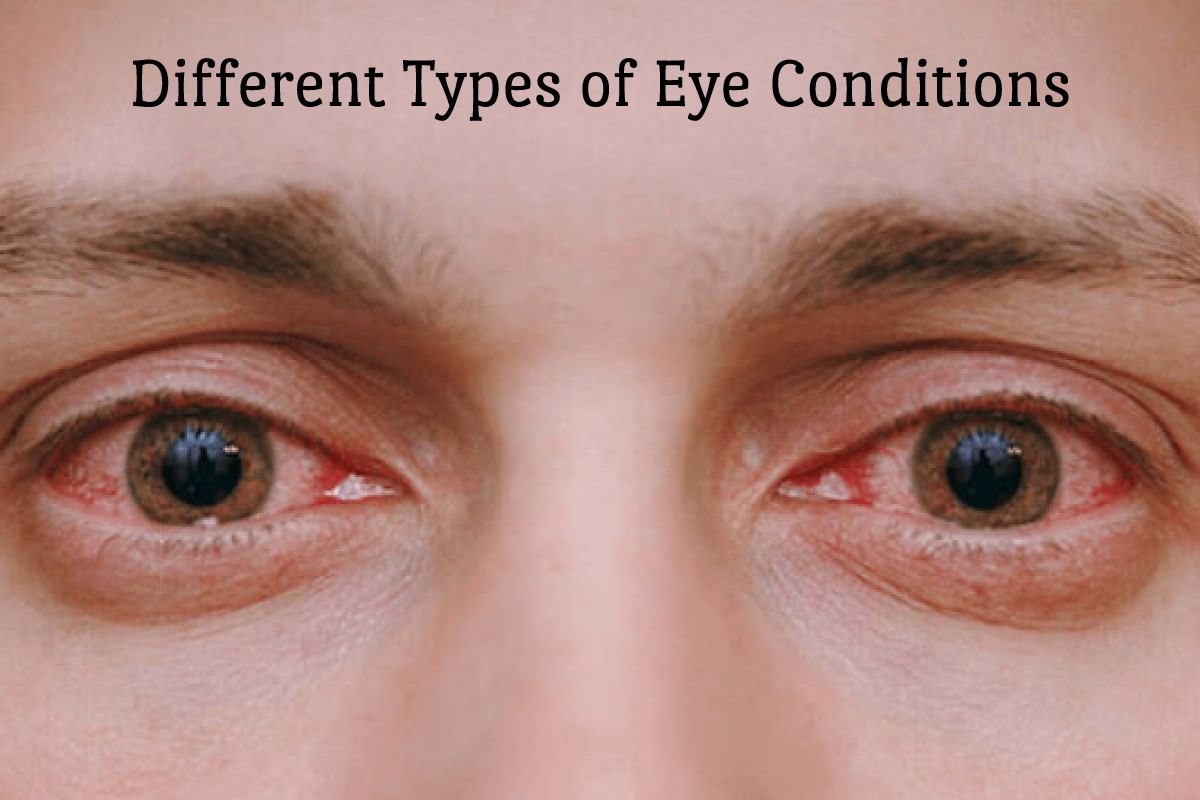There are many different types of eye illnesses and visual difficulties. Some are incurable, but many are treatable. You may help your eye health by leading a healthy lifestyle and regularly seeing your eye doctor whenever your vision changes.
The good news is that it is never too late to start caring for your eyes. Regular eye health consultations and screenings can help with early detection.
This is critical for repairing or reducing the progression of most eye problems. If your eyesight problem persists or worsens for more than a few days, consult an eye care expert.
Table of Contents
Common Eye Conditions
Refractive Error
In the United States, the most common eye issues are refractive errors. They can affect anyone at any age for various reasons, including hereditary.
Myopia symptoms are near-sightedness; hyperopia is farsightedness, astigmatism symptoms such as distorted vision, and eyestrain symptoms; and presbyopia is the loss of ability to focus up close, which can be treated with prescription glasses, contact lenses, or in some cases, surgery.
Macular Degeneration
This is an eye illness that impairs your central vision. It is also known as age-related macular degeneration or AMD. It harms the macula in the middle of your retina and helps you see small details. It is the primary cause of blindness in adults over 60.
Macular degeneration can be dry or moist. Wet AMD occurs when aberrant blood vessels form underneath the macula and leak blood and fluid. This causes macula damage and loss of vision.
Dry AMD causes macular thinning, which distorts your central vision over time. Dry AMD is more prevalent than wet AMD, accounting for most cases. Medication can help to halt disease progression or avoid catastrophic visual loss. Recent advancements have been made in treating wet AMD with intraocular injections of anti-VEGF medicines.
Cataract
A cataract is a clouding of the eye’s lens and the main cause of blindness globally and the primary cause of peripheral vision loss in the United States.
Cataracts can develop at any age for several reasons and can be present at birth. Even though therapy for cataract removal is widely available, access constraints like insurance coverage, treatment costs, patient choice, or lack of information prevent many people from accessing the necessary care.
Diabetic Retinopathy
Diabetes-related retinopathy is a frequent diabetic consequence. It is one of the primary causes of adult blindness in the United States. Diabetes-related retinopathy is when blood vessels in the retina continue to be damaged due to uncontrolled high sugar (glucose) levels in your blood for an extended period.
The retina is the light-sensitive tissue in your eye that allows you to see clearly. Until the illness is severe, most persons with diabetes-related retinopathy do not notice any changes in their vision. Injections of a specific type of medicine and surgery to repair or decrease blood vessels in the retina are among the treatments.
Glaucoma
This condition is a collection of disorders that can cause damage to your eye’s optic nerves, which can result in vision loss and blindness.
It can develop when there is an increase in the fluid pressure of the eyes. Recent research, however, indicates that glaucoma can arise with normal eye pressure. Early treatment can frequently save your eyes from major vision loss.
Open-angle is a chronic ailment that progresses slowly over time without the person detecting vision loss until the sickness is severe, which is why it is referred to as the “sneak thief of sight.”
Angle-closure can occur unexpectedly and is uncomfortable. However, vision loss can develop swiftly, and the pain and suffering prompt individuals to seek medical assistance before irreparable damage occurs.
Strabismus
Strabismus is characterized by an issue of balance in the placement of both of your eyes. It can cause your eyes to turn outward or cross inwards. A lack of synchronization between the eyes causes strabismus.
As a result, the eyes glance in diverse directions and do not focus on a single location simultaneously. The reason for most occurrences of strabismus in youngsters is unknown.
More than half of these patients have the condition at or shortly after delivery. When both eyes fail to concentrate on the same image, depth perception is decreased or missing, and the brain may learn to disregard the information from one eye, resulting in irreversible vision loss.
Retinal Detachment
This can happen when your retina separates from the underlying tissues that maintain it in place within your eye. This is a dangerous eye ailment that, if left untreated, can result in blindness.
Depending on the degree of the separation, you may or may not have symptoms. Darkening or covering of your vision part or side vision, flashes of light, black patches, or squiggly lines drifting across your vision might be symptoms. Laser treatment or other surgical methods seal or repair the retinal tear and reconnect the retina.
Amblyopia
The most prevalent cause of visual impairment in children is amblyopia, sometimes known as “lazy eye.” This occurs when one of the eyes’ vision is impaired due to a malfunction between the eye and the brain. Although the eye seems normal, it is not utilized normally because the brain favors the other eye.
Amblyopia occurs when an imbalance in the location of the two eyes, which can result in refractive errors affecting only one eye and, in rare cases, additional eye disorders such as cataracts.
Amblyopia frequently continues into adulthood unless adequately treated in infancy and is the most prevalent cause of persistent one-eye visual impairment in children and young and middle-aged people.
Conclusion
You can adapt certain practices to safeguard your vision from these circumstances and learn how to improve eyesight. See your eye care specialist frequently if you don’t notice any eye-light changes.
Some eye disorders have no warning signals. Inquire with your eye doctor about how frequently you should be visited.
Overall, keeping your body as healthy as possible will reduce your chances of developing eye disorders or vision issues.

